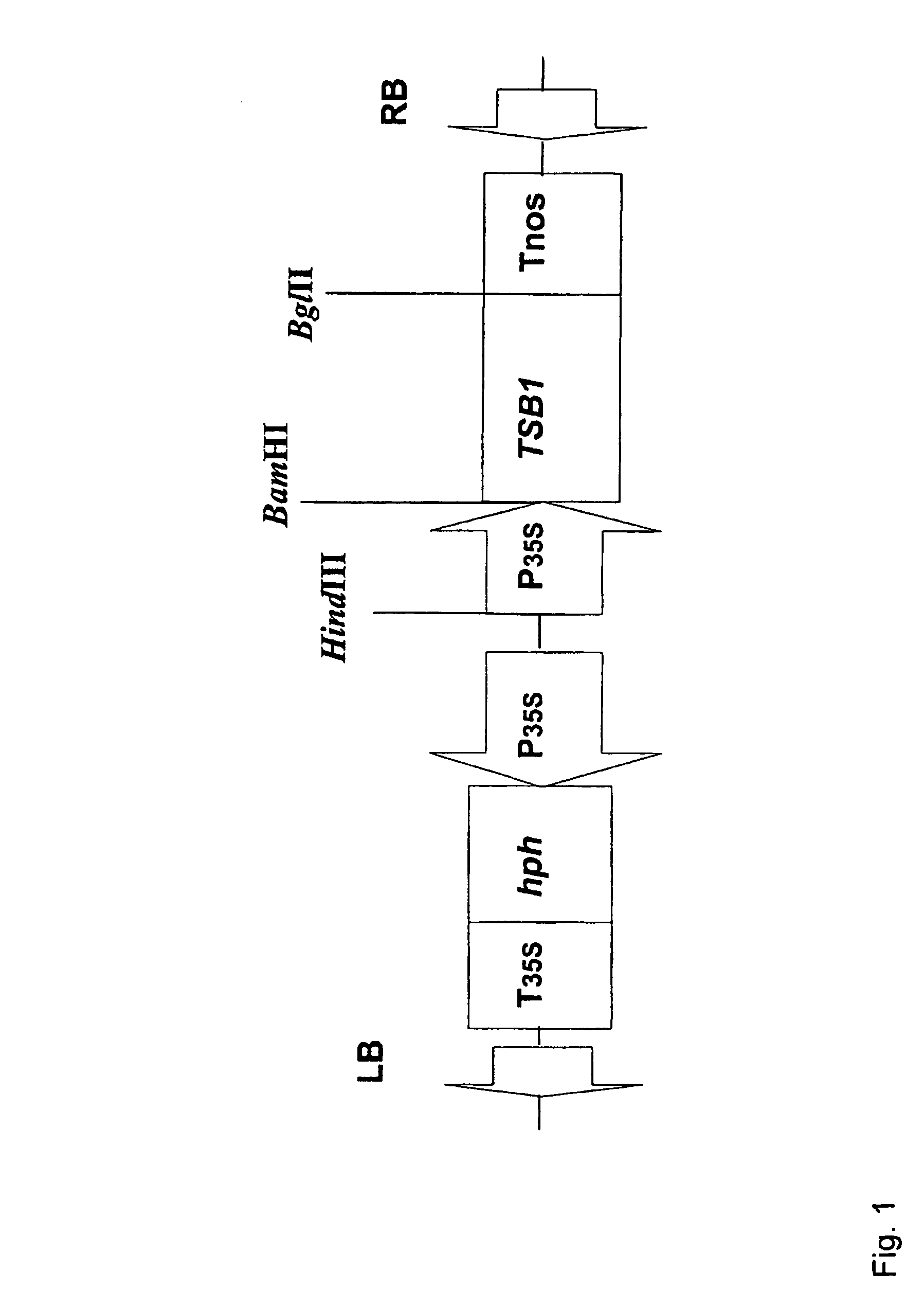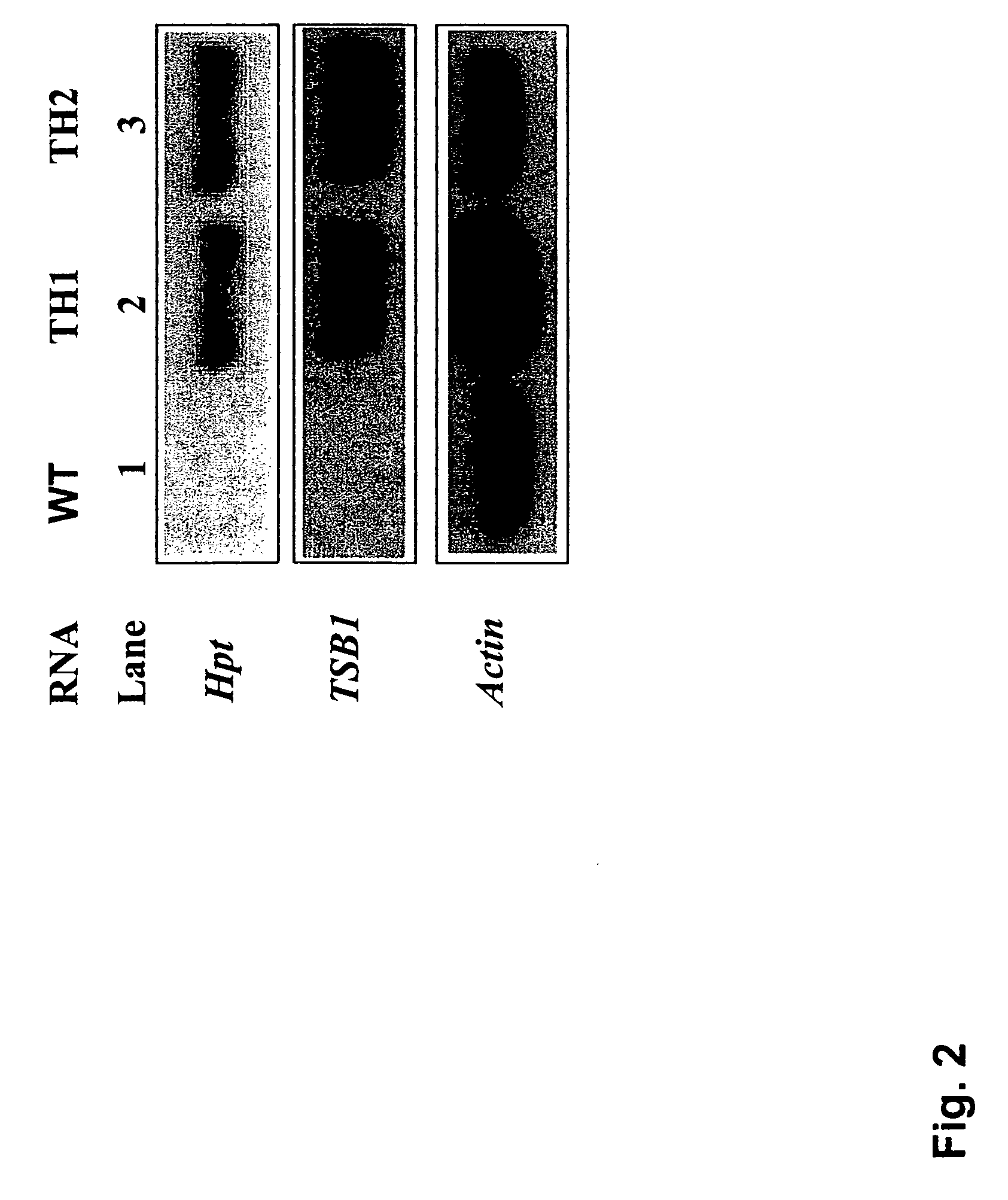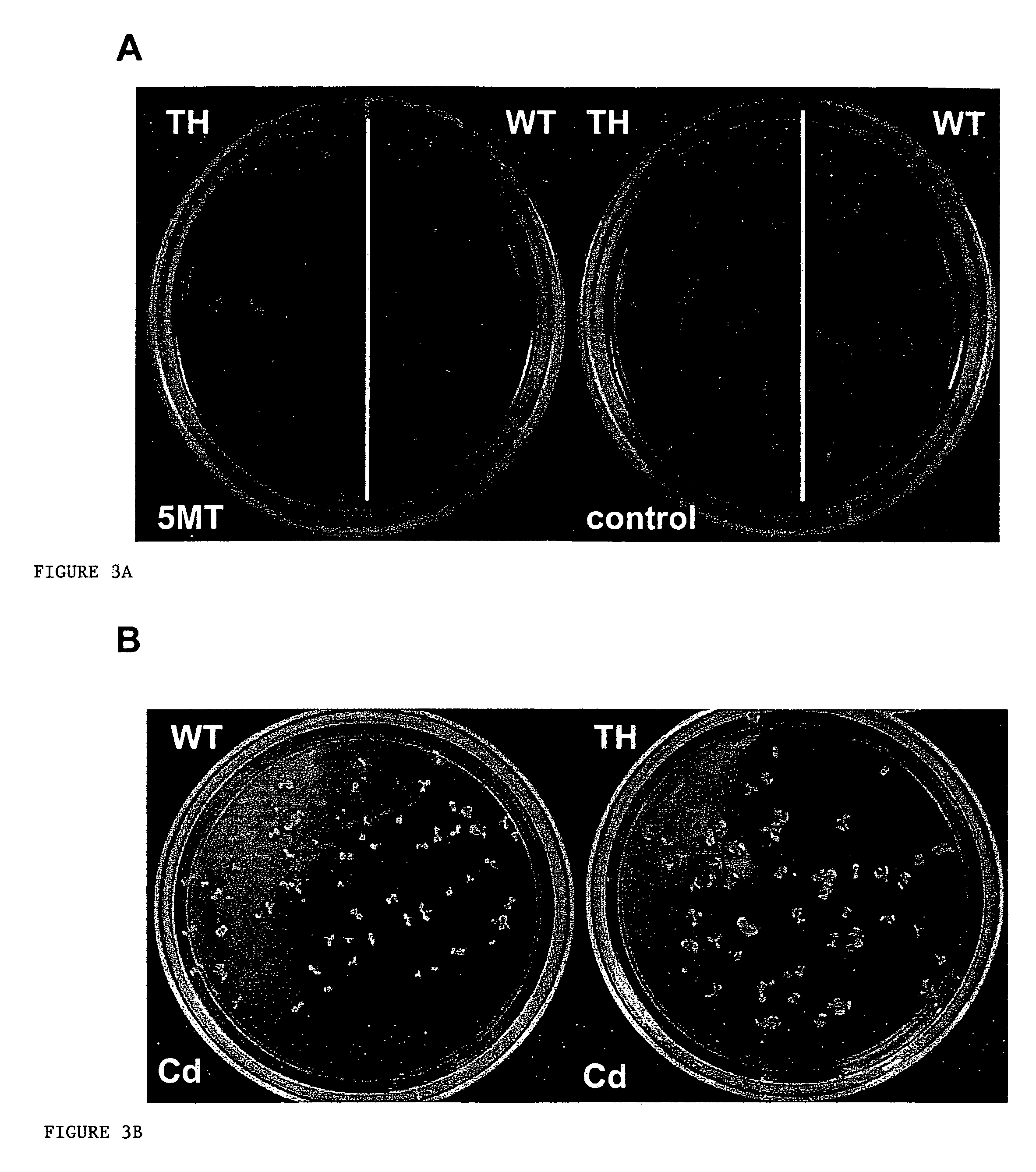Non-antibiotic selection marker genes
a non-antibiotic and selection marker technology, applied in the field of non-antibiotic selection marker genes, can solve the problems of inadvertent introduction of undesirable genes, inability to detect and detect bacteria, and inability to detect bacteria, etc., to achieve a simple and efficient 5mt and/or heavy metal-resistant selection procedure.
- Summary
- Abstract
- Description
- Claims
- Application Information
AI Technical Summary
Benefits of technology
Problems solved by technology
Method used
Image
Examples
Embodiment Construction
[0026]In developing a new selection system we cloned the AtTSB1 gene to overproduce and accumulate free Trp in transgenic Arabidopsis plants. Resistance to Trp analogue 5MT and heavy metal CdCl2 appears to be accomplished by the overproduction of free Trp, which reduces the effective concentration of the analogue and heavy metal, and is an effective non-antibiotic selectable marker after transformation, equivalent to hygromycin selection. However, the use of antibiotic resistance markers has been the target of societal concerns, because of possible deleterious effect on other organisms in the ecosystem caused by the use of antibiotics, there is a need to develop new markers for risk-free genetic engineering strategies in crop improvement (Mild and McHugh, 2004).
[0027]Various positive plant selection systems have been reported utilizing toxic selection agents and marker genes derived from other organisms (Haldrup et al., 1998b; Joersbo, 2001; Ebmeier et al., 2004; Leyman et al., 2004...
PUM
| Property | Measurement | Unit |
|---|---|---|
| diameter | aaaaa | aaaaa |
| dry weight | aaaaa | aaaaa |
| pH | aaaaa | aaaaa |
Abstract
Description
Claims
Application Information
 Login to View More
Login to View More - R&D
- Intellectual Property
- Life Sciences
- Materials
- Tech Scout
- Unparalleled Data Quality
- Higher Quality Content
- 60% Fewer Hallucinations
Browse by: Latest US Patents, China's latest patents, Technical Efficacy Thesaurus, Application Domain, Technology Topic, Popular Technical Reports.
© 2025 PatSnap. All rights reserved.Legal|Privacy policy|Modern Slavery Act Transparency Statement|Sitemap|About US| Contact US: help@patsnap.com



